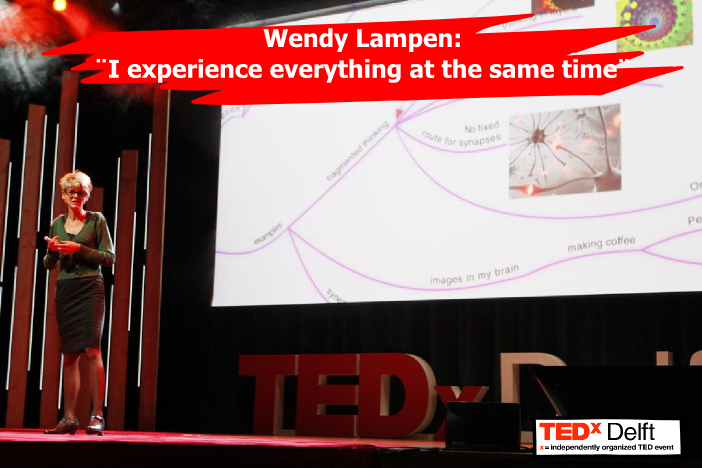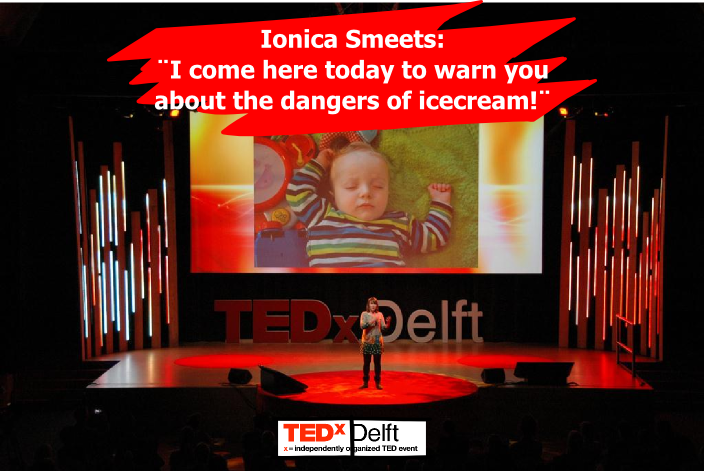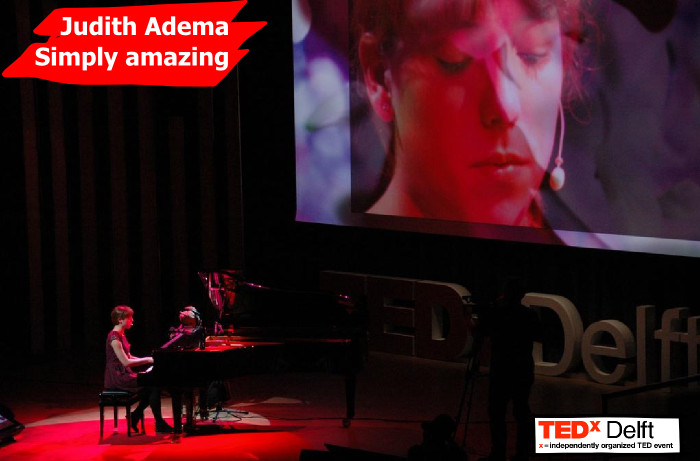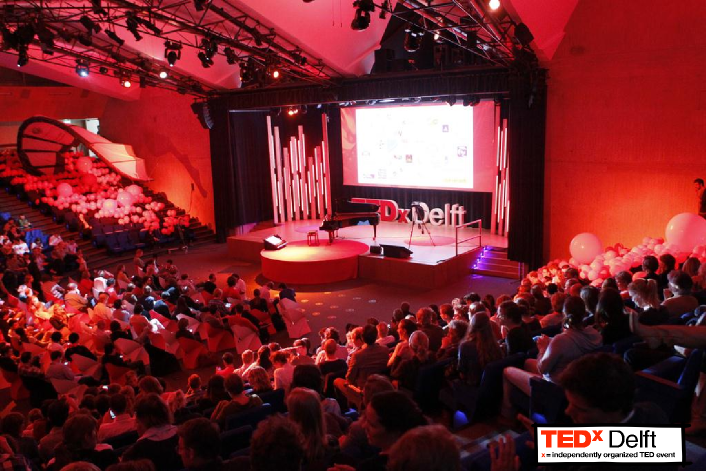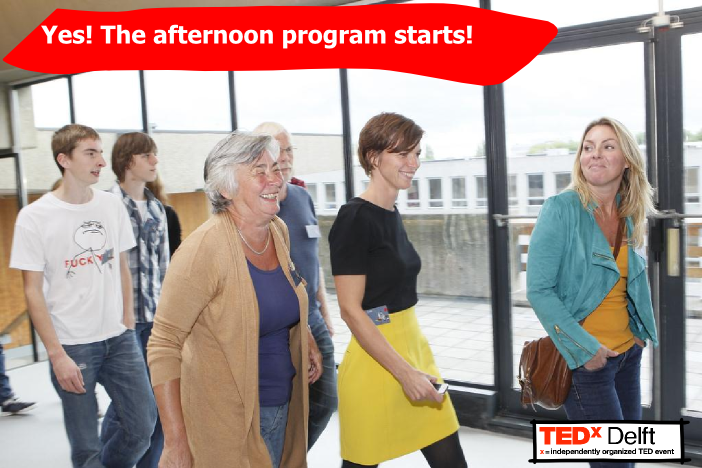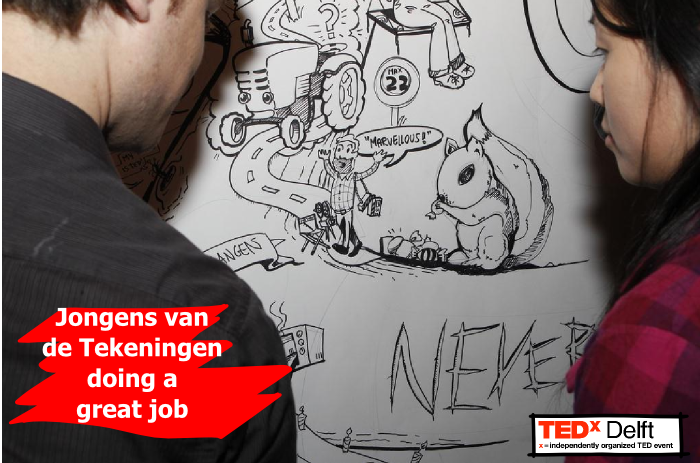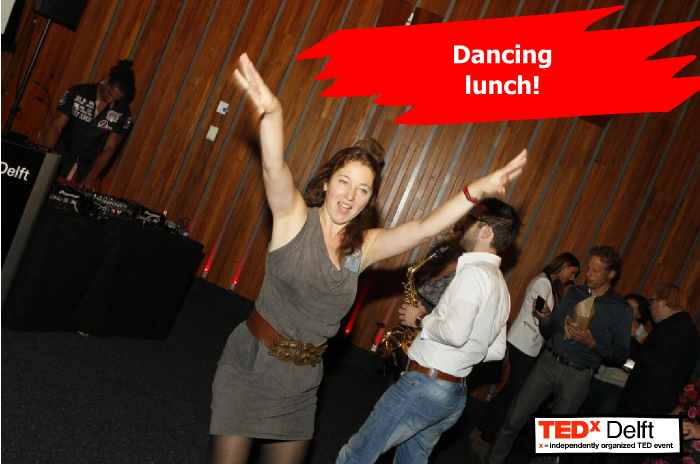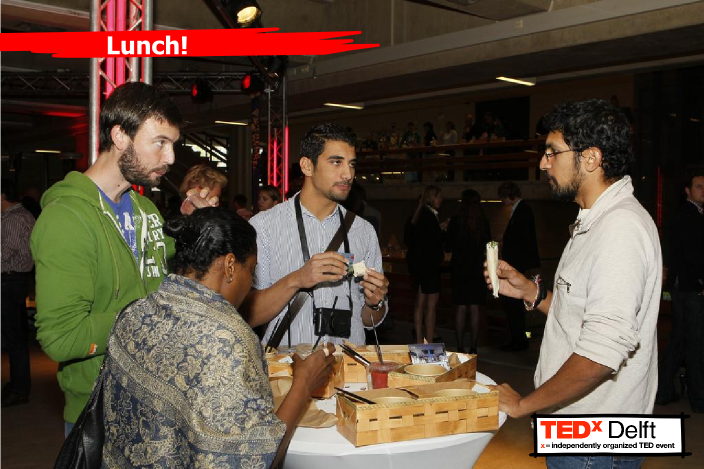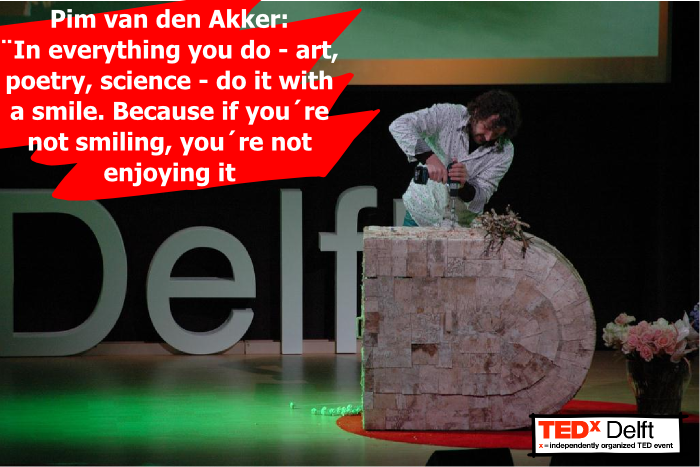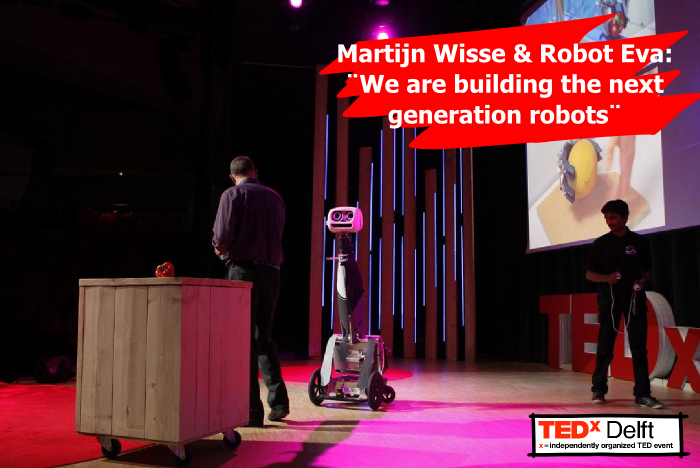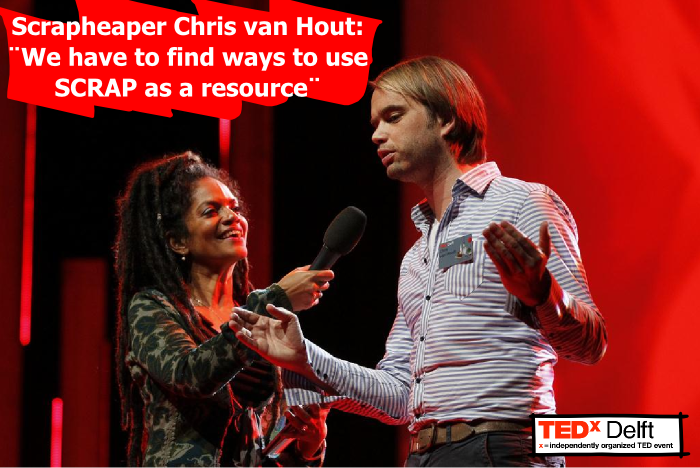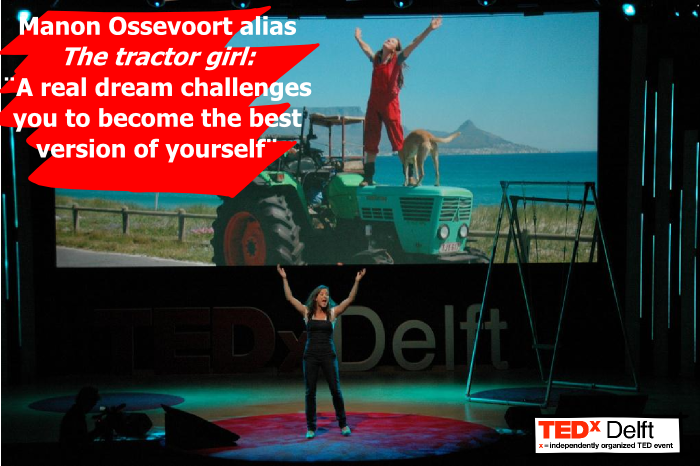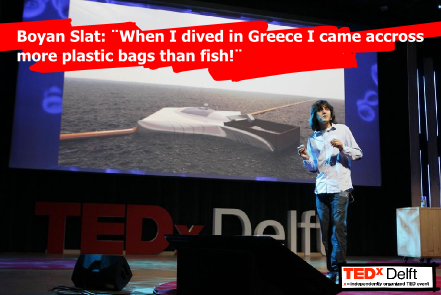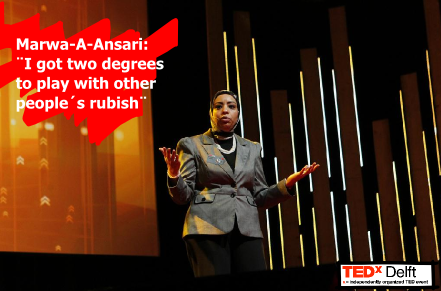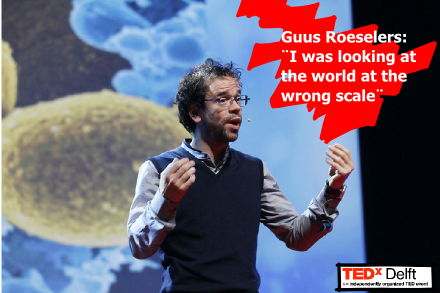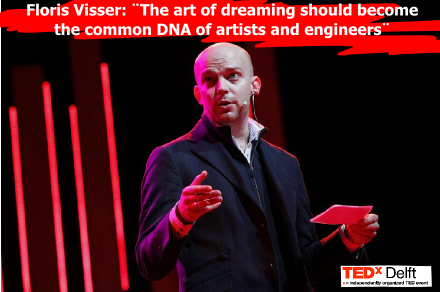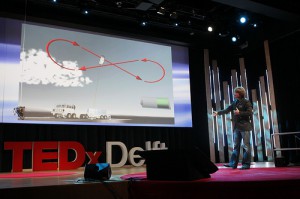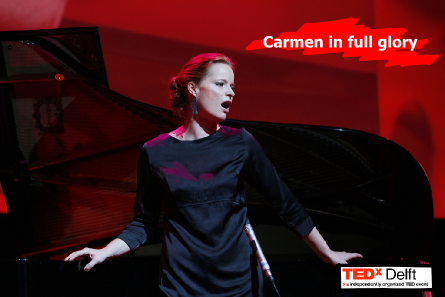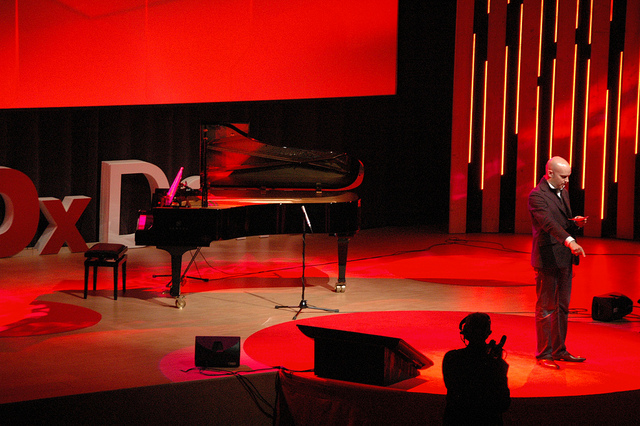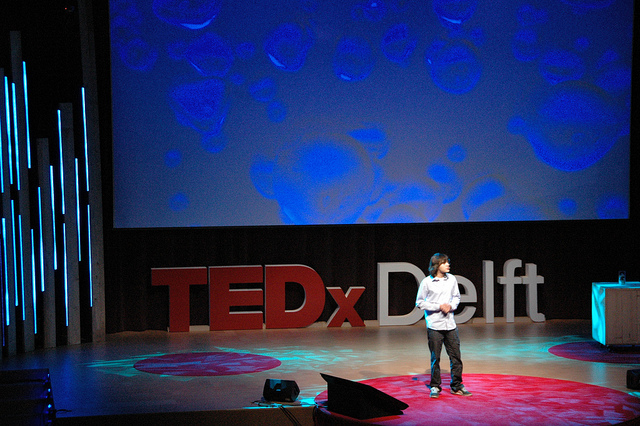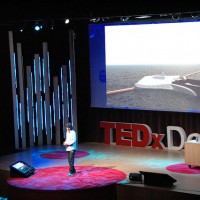 Boyan Slat (@BoyanSlat, Delft, 1994) combines environmentalism, creativity and technology to tackle global issues of sustainability. Currently working on oceanic plastic pollution, he believes current prevention measures will have to be supplemented by active removal of plastics in order to succeed. With his concept called Marine Litter Extraction, Boyan Slat proposes a radical clean-up solution, for which he won the Best Technical Design award 2012 at the TU Delft. Read more
Boyan Slat (@BoyanSlat, Delft, 1994) combines environmentalism, creativity and technology to tackle global issues of sustainability. Currently working on oceanic plastic pollution, he believes current prevention measures will have to be supplemented by active removal of plastics in order to succeed. With his concept called Marine Litter Extraction, Boyan Slat proposes a radical clean-up solution, for which he won the Best Technical Design award 2012 at the TU Delft. Read more
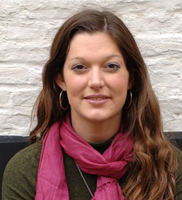 Wednesday 17 October, Eva Lantsoght talked about fifty shades of concrete at TEDxDelftSalon.
Wednesday 17 October, Eva Lantsoght talked about fifty shades of concrete at TEDxDelftSalon.
Well-designed structures interact with their surroundings: they can enter into a dialogue with the natural light, stand out as a landmark and shape the landscape or become part of it. As for concrete structures, we typically associate these with grey buildings from the second half of the 20th century, or the monotonous bridges in the highway network — concrete offered a cheap solution for the housing and transportation needs of the increasing population. Read more
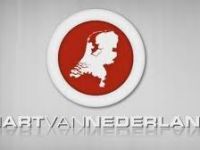 The idea of going to Mars, as presented by Bas Lansdorp at TEDxDelft, is hot news in the Netherlands. SBS news – Hart van Nederland – featured an item called ‘The Dutch are going to Mars’.
The idea of going to Mars, as presented by Bas Lansdorp at TEDxDelft, is hot news in the Netherlands. SBS news – Hart van Nederland – featured an item called ‘The Dutch are going to Mars’.
“In 10 years it’s going to happen: Men will go to Mars. It won’t be the Americans or the Russians to be the first…..it will be the Dutch non-profit Mars One to take on the mission”.
See the item (in Dutch) at www.hartvannederland.nl
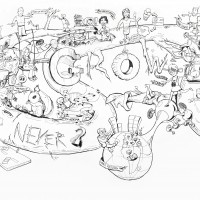 At TEDxDelft, Jongens van de Tekeningen made live visualizations of all speakers and performers at TEDxDelft, 5 October 2012.. This giant drawing was made on a 1,5 by 5 meter piece of paper and it sold afterwards; the money was donated to charity. During the day, the process was streamed live over the internet and everything was recorded. In this timelapse video, the whole day is captured in just 1,5 minutes. Read more
At TEDxDelft, Jongens van de Tekeningen made live visualizations of all speakers and performers at TEDxDelft, 5 October 2012.. This giant drawing was made on a 1,5 by 5 meter piece of paper and it sold afterwards; the money was donated to charity. During the day, the process was streamed live over the internet and everything was recorded. In this timelapse video, the whole day is captured in just 1,5 minutes. Read more
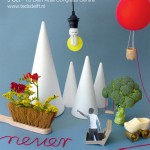 To introduce TEDx to the TEDxDelft audience in 2012, we created a mini-fairytale in animation style. We thought it fitting to choose for a fairytale, because of the theme Never Grow Up. The drawings were made by Rosa Cerruto, Aldith Hunkar did the voice and Improve/Firos Kariman did the editing. We are very proud of the result and are very pleased to have started TEDxDelft off with this animation. It really worked out well, we think. Read more
To introduce TEDx to the TEDxDelft audience in 2012, we created a mini-fairytale in animation style. We thought it fitting to choose for a fairytale, because of the theme Never Grow Up. The drawings were made by Rosa Cerruto, Aldith Hunkar did the voice and Improve/Firos Kariman did the editing. We are very proud of the result and are very pleased to have started TEDxDelft off with this animation. It really worked out well, we think. Read more
Normally when you ride your bicycle you simply just hop on it and you are on your way to your destination. But have you ever considered asking yourself, how does the bicycle work? How does a bicycle balance on its own? What keeps the bicycle upright? Bicycle don’t do tricks Read more
When it comes to changing behaviour, advertising agencies generally do a bad job. Designers are masters of manipulation. And once we know this, we can start manipulating this planet into a better place. Says Tom de Bruyne, Belgian, psychologist and ‘advertsing guy’ as he puts it himself. Why designers eat advertising people for breakfast Read more
The closing performer of the day is Nynke Tromp. She talks us through some ideas that will shake up our society!
She states that our democracy has become a mediacracy. Politicians respond to incidents versus having a long term vision. It’s all about being lovable instead of being capable. About fighting with your opponent instead of building bridges. This destructive competition has led to a gladiator fight. Short term focus for quick wins has replaced long term focus. With small adjustments, we can change this system. Let’s rack this media circus! Instead of voting day, let’s vote on our birthday! Read more
 Wendy Lampen explains us in a very vivid language how she experiences the world. All sensations impact her brain and collide such that she has linked memories. She gives us an insight on what the world feels like when you have Asperger’s syndrome.
Wendy Lampen explains us in a very vivid language how she experiences the world. All sensations impact her brain and collide such that she has linked memories. She gives us an insight on what the world feels like when you have Asperger’s syndrome.
Her brain might function in a different way, but does that simply mean she is abnormal? Or could her different braintype actually add value to our world as well, by shining a light on the world from an angle so unexpected to us? And why is there a mindmap on the screen while she is talking?
Judith Adema is a 16 year old singer songwriter who is best known by the public through her song ‘Everything Changed’, which she sang in the ‘birdy contest’ on the radio show of Chiel Beelen. She had her first piano lesson at the age of six, and from that moment music has been in her life. A friend told her she should participate in the radio contest and so she did. Although she didn’t win, she impressed many people with her song ‘Everything Changed’ about losing someone who is dear to you but being able to move on. She wrote the song after losing an uncle she was close with. The emotions took her back to the time of the loss of her father nine years ago. Judith: “Although you lose someone physically, the person is still around”. She still feels the presence of her father, even more so because the musical talent of her father continues in her. Read more
Pim van den Akker (1976) is one of the best floral masters in the world, teacher and designer. For the tedx introduction click here. In his Tedtalk he tells a personal story about how you can really use the child inside you to look at the world. He wants to be a child in the playground called the world. When he wakes up every day, he looks outside and thinks of what he wants to do in this big playground. Read more
Self Healing Asphalt in practice
Erik Schlangen looks at cracks in buildings and roads, and considers the material to be ill, not broken. And the ill patient can be healed, as long as initially he contains some simple tricks. Read more
Think about your childhood for a minute. Imagine you are 8 years old, you’re on the beach and you’re playing with a kite. Remember how strong those things are? They could easily drag you ten meters across the beach.
Now imagine the power of a kite to yield energy. Yes, it’s possible. Ronald Schmehl of Kitepower tells you how.
It’s a technology based on inflatable membrane wings which are tethered to a motor/generator unit on the ground. The present kite power demonstrator system operates kites of 14, 25 or 50 m2 surface area in periodic pumping mode to generate 20 kW mechanical reel-out power (source: Kitepower).
“But we have wind turbines to gain energy!” I hear you.
Well, the advantages of a kite against a windmill is that a kite reaches ten times more altitude than a windmill, because it reaches higher. Up to 10 kilometers with a speed of 70-80 km per hour. Also, wind mills can harm animals, they make a noise (when you get too close) and some people find them ugly because they pollute the horizon.
Kitepower can be used in a disaster area where there’s no electricity, like after an earthquake. You basically only need the kite and the control unit.
To get an idea of how strong the kite is: it can pull a large container vessel. Yep, that’s not a kite to play around with!
The product looks really amazing and I’m just thinking “why are we still using windturbines when we have these kites?”
The integrated approach of arts, science and technology is one of great value: It can make performances better, more astounding. It makes things easier. Thanks to the advances in science and technology, art becomes an (even) more limitless medium.
Opera, for example, is art where creativity and technology are combined optimally. Therefore it’s no surprise Floris Visser delivers this TedTalk. He teaches the master class: Deus ex machina at the University of Delft; he is both an opera director as a cultural professor at the University of Delft this fall. His previously produced operas have been very well received and he is now working on a production of ‘Carmen’ with the Delftsche Opera Compagnie and the Technical University. Read more
Computers and robots will never take over the World. They don’t get depressed, don’t drink whisky and they will never invent new mathematics. These last things only humans do. So we need another way of thinking about artificial intelligence. Artificial intelligence enhances human intelligence, nothing more.
![Bennie-Mols-TEDx-200x300[1]](https://www.tedxdelft.nl/wp-content/uploads/2012/10/Bennie-Mols-TEDx-200x30012-200x200.jpg) Bennie Mols, performer @TEDxDelft today, combines the latests insights in artificial intelligence with those from the brain- and cognition sciences and philosophy. He loves artificial intelligence, but argues that artificial intelligence will always remain different from human intelligence. In his opinion there is nothing wrong with that.
Bennie Mols, performer @TEDxDelft today, combines the latests insights in artificial intelligence with those from the brain- and cognition sciences and philosophy. He loves artificial intelligence, but argues that artificial intelligence will always remain different from human intelligence. In his opinion there is nothing wrong with that.
Hoovering is complex
“Look at Japan”, Mols says. “It is the leading country in the world in creating and using artificial intelligence. But after the disaster in Fukuyama it were humans that had clean up the mess. There was no robot that could do the work. Because a robot is not a human and doesn’t need to be. A small example: there are robots to hoover houses. But hoovering requires complex decisions. What to do with that one small paper on the floor? Hoover it or save it? Robots don’t know, humans do.”
Mols statest that computers and robots don’t have our limits, but on the other hand they have no urge to reproduce themselves, like us. The human brain, that has hardly evolved over the last 100.000 years, is conditioned to let the human body survive and to keep the species alive. That is the big difference with artificial intelligence; computers are efficiënt, they don’t get tired and they don’t make mistakes likes humans do. Also they have much more capacity and they work infinitely faster. But they are not creative.
No good use
We don’t seem to put that creativity to very good use, as we learn robots to lead ceremonies, play a trumpet and defeat the best chest players in the world. We ought to learn them other, more practical and usefull things. Luckely we are starting to realise this. For example, plains can fly on an automatic pilot…, but only in cooperation with a human pilot that controls the process. Artificial intelligence can also save about one million lifes per year. It can for instance help avoid traffic accidents in smartcars that can see in the dark, prevent the driver from driving too close to the next car or take over when the driver gets tired.
Supercomputer Watson can help doctors making better diagnoses. Because Watson sees what the human, less efficient doctor oversees. But at the end of the day it is the human doctor that has to draw the right conclusions. “So you see,’says Mols, “computers and robots won’t take over human functions, they only enhance it. In fact, mankind has enhanced its own intelligence by creating robots and computers. Look at the cooperation between human and artificial intelligence as two perfect tango dancers.”
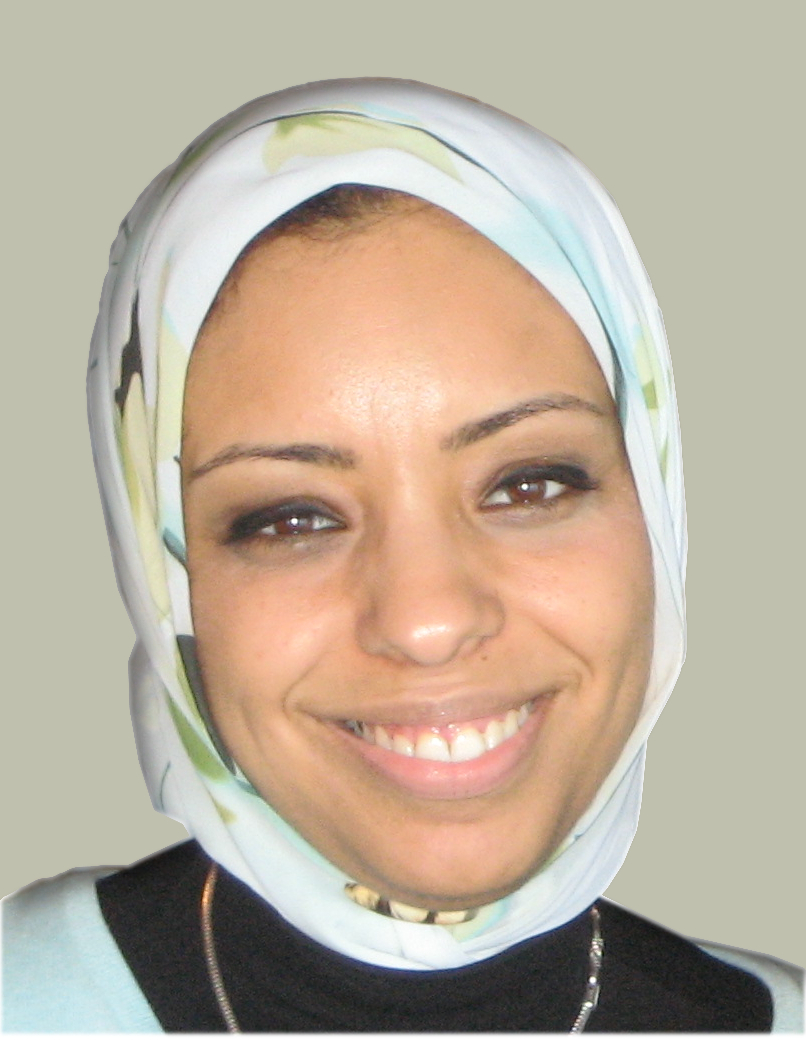
I initially wanted to blog about Dr. Marwa Al-Ansary because she is a female civil engineer and researcher, working on concrete (sulfur concrete) who enjoys writing a poetry – enough to entice my curiosity! Little did I know about the bold decisions she made in her life to pursue her interests, and her performance has left me in full admiration.
From Egypt to the United Kingdom to Qatar to the Netherlands – this researcher, engineer, woman has come a long way to pursue her dreams.
Boyan eloquently confronts you with the marine pollution problem as he takes the stage. He remarks that a common reply when he’s talking about the environment is something along the lines of “that’s for our children to worry about.”
Boyan looks at the audience, smiles and waves: “Hello. Here I am.”
And while most of the world seems concerned with prevention and education (perhaps because cleaning the oceans seems like such a daunting task), he asked himself: “Why not clean it up?”
 On stage today will be two performers who have a space connection, one more obvious than the other. The less obvious one is Guus Roeselers. Next to being awarded professional of the year 2012 he is also expert on system biology. His performance at TEDxDelft will be about the amazing cosmos of microbiology. The second performance is from Mars One CEO Bas Lansdorp. Mars One is a company that aims to bring human life on a one way trip to the red planet in 2023. Read on here.…
On stage today will be two performers who have a space connection, one more obvious than the other. The less obvious one is Guus Roeselers. Next to being awarded professional of the year 2012 he is also expert on system biology. His performance at TEDxDelft will be about the amazing cosmos of microbiology. The second performance is from Mars One CEO Bas Lansdorp. Mars One is a company that aims to bring human life on a one way trip to the red planet in 2023. Read on here.…

